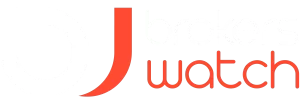Credit Agricole
Currency Wars 2.0
The commodity terms of trade supply shock that has rocked the global economy so far this year continues to reverberate across FX markets. The shock has fuelled inflation across the board and spurred up global central banks into action. The Fed’s efforts to contain the US inflation have further fuelled a USD rally that, in turn, has forced other central banks to tighten aggressively to defend their own currencies and curb imported cost-push inflation. This has given rise to a currency war 2.0. of sorts that so far had one winner –the high-yielding, safe haven USD.
The credibility of the Fed tightening plans –reflected in the growing US real rates and UST yields –could continue to make the USD the winner of the currency war 2.0. Ahead of the September FOMC meeting, the US rate markets are pricing in a greater-than-75bp hike to be accompanied by an updated Fed dot-plot that points to a terminal rate of c.4.50% (vs 3.75% in June). The USD near-term outlook will hinge on the Fed’s ability to exceed the already hawkish market. In that, a more aggressive rate hike, a higher terminal rate and/or accelerated QT may be needed to lift US rates and/or fuel market risk aversion in a boost to the USD.
The BoE is expected to tighten aggressively next week but may struggle to exceed the already very hawkish market expectation. The emergency mini-budget will further detail the UK government’s cost-of-living-crisis measures. Its plans have threatened to upend the gilt market, however, and could complicate the BoE’s own gilt sales plans. Any potential QT delay will keep UK real yields very negative to the detriment of the GBP.
The other European CBs on duty next week (SNB, Riksbank and Norges Bank) are set to follow suit too. The continued overshoot in domestic inflation should force the Scandinavian banks to further frontload tightening compared to their June plans, while higher terminal rates also look to be on the cards. Meanwhile, the SNB’s outcome may not be as much of a watershed moment as June’s shift on the CHF assessment, while still possibly going for at least another 50bp rate hike.
The BoJ will likely continue to stand alone amongst G10 central banks and leave its policy parameters unchanged next week but pledge to review its policy settings in October and when it does its forecast review. This may test of the MoF’s tolerance of JPY weakness. Elsewhere, EUR investors will focus on the September PMIs out of the Eurozone as well as the outcome of the Italian general election on 25September.
ING
USD: Hawkish Re-pricing Continues
Despite some mixed data out of the US yesterday, markets have continued to push their hawkish bets on the Fed tightening further, and with 75bp fully priced in for next week’s meeting, March 2023 Fed Funds futures now trade at around 4.50%. This marks a 50bp+ increase in peak rate expectations since the start of September, which has translated into a 40bp rise in two-year Treasury yields.
Ultimately, we’re observing a textbook FX reaction to the US yield curve inversion: a supported dollar, and heavily impacted pro-cyclical/commodity currencies; dollar-bloc currencies are down 1.6-2.1% in the week, and only NOK has performed worse (-2.5%) versus the USD. Slumping oil prices (third consecutive weekly drop) are all part of the equation and are mirroring how markets are factoring in a more aggressive tightening by central banks materially hitting global demand.
In such an environment, risk sentiment is struggling to recover and this is just another factor delaying any correction in the dollar. Today, University of Michigan sentiment and inflation surveys will be watched (especially the latter), but we may need to see some significantly below-consensus reads to dent the ultra-resilient hawkish Fed expectations at this stage. We see the dollar staying on solid ground into Wednesday’s FOMC announcement.
Source: Tickmill


